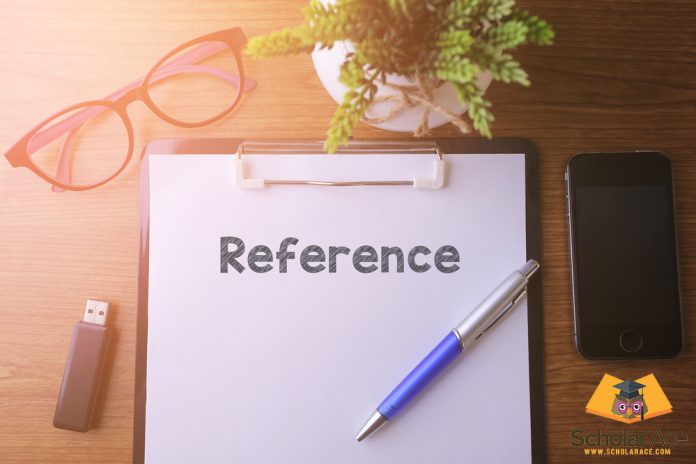Table of Contents
WHY WE DO REFERENCE AND CITATION?
Essentially, reference and citation is how the writer is supposed to give a nod of approval (or disapproval) to the sources they have gathered their information from. Hence, whenever a writer quotes ideas or words from a source, it is imperative that the source be mentioned. It is also popularly referred to as “Citation”.
You can check tutorial on same topic in our YouTube Channel.

WHAT ARE THE BENEFITS?
It is one of the many ways a writer can avoid being accused of plagiarizing the work and effort of a 3rd party. You do not want your work to be an echo of someone else’s ideas instead you build upon and explain those ideas while keeping in mind your predecessors. It also allows the reader to explore and further read into the sources the author is quoting from. Hence it’s a way to increase knowledge as well.
WHAT ARE THE DIFFERENT TYPES OF REFERENCING?
There are different ways to refer to other works and cite your sources. That depends on what your teacher/college/ journal has specified.
The various types of references, referred to as “styles”. These are:
- AMA
- APA
- Harvard
- Chicago
- Vancouver
- MLA
![]()
In this article we will only go into details of how to cite your research paper by taking the most popular referencing as our example; the APA style referencing.
THE APA METHOD
- Where Did It Come From?
APA stands for ‘American Psychological Association’. It is an organization whose prime focus of work and research is on psychology. However, they are also the ones credited for designing this specific style of citation. It has gone on to be one of the most preferred citation styles in the fields of science.
- How To Do It?
There are 2 components of an APA style reference. Firstly, you do an in-text citation for your sources by making an APA outline. What the final framework of your reference looks like depends largely on which source you are citing from. Your original source could be a journal article, a website, or a book.
The basic framework of an APA style citation in text looks somewhat like this:
- The name of the author or authors of the content
- Year of publication of the content

Hence, the final outcome will be:(Contributors, Year)
You are supposed to use round brackets and put a comma between the author name(s) and the year of publication.
This will help you add in-text citations for your sources. Keep in mind to place the reference before the punctuation marks in your work.
If you are presenting a quote from an author word to word then you are required to include the page or paragraph number of the quote in your in-text reference.
- The name of the author or authors of the content
- Year of publication of the content
- Page number or paragraph number of quote
Hence, the final outcome will be: (Contributors, Year, pp. 25-26)
Secondly, you are required to present a reference list at the end of your document or paper. This is done so that you provide the reader with further follow-up of your resources.

There are some major rules to follow in while listing down your references in APA style. These are listed below:
- You must present your list of references on a new page with the title: References.
- These references should be in alphabetical order regardless of the type of reference it is.
- The entries should be listed in order of the authors’ surnames.
- If any of your references do not have an author then you must use the first significant title component in order to list it.
- Put a 5-7 spaces indent while entering each subsequent line.
- Do not forget to use double spacing.
- Make sure you end all your references with a full-stop (.) EXCEPT when it’s a URL or a DOI at the end of the reference.
Below we will give detailed info on how to cite journal articles, books as well as quotes in APA style.
CITING A ‘JOURNAL ARTICLE’
Entries in order to reference or cite a journal article must have the following components in your APA style format:
- The name of the author or authors of the journal article. First initials must follow the surname of the authors.
- Year of publication of the journal article, in round brackets.
- Titles of the journal article.
- Titles of the Journal itself, italicized.
- Volume of the journal in which the article was published, italicized.
- Issue of the journal in which the article was published.
- Page range of the article.
- DOI. It is usually found on the first page of an article right where the copyright notice is also present. It can also be found on the article’s database landing page.
- Left adjust the first line of each reference.
- Put a 5-7 spaces indent while entering each subsequent line.
Hence the final outcome will be:
Smith, D. (2018). Neuropsychiatry and modern sciences. British Medical Journal, 16(9),
23-42. DOI:11.7558/bmj.2018.e1261
CITING A ‘BOOK’
To refer or cite the print version of a book in APA style, the format must include the following components:
- The name of the author or authors of the book. First initials always follow the surname.
- Year of publication of the book, in round brackets.
- Title of the book, italicized.
- Place where the book was originally published.
- Name of the publisher of the book.
- Left adjust the first line of each reference.
- Put a 5-7 spaces indent while entering each subsequent line.
Hence the final outcome of citing a book will be:
Jacques, L. (2018). Introduction to Geriatrics. Massachusetts, VIIIC: Oxford Press.

CITING YOUR QUOTES IN APA
If you are quoting the exact words of an author and the text is less than 40 words long, then you can just add them within your original text and put double quotation marks on it. However, if you’re quoting word for word i.e. direct quote that comprises of 40 or more words then you must begin an entirely new paragraph that is left indented. There is no need for quotation marks in this type of direct quoting but it should be double spaced.
REFERENCE AND CITATION TOOLS ONLINE
Reference and citation lists are mostly seen as some of the most disconcerting steps in academia. Hence, certain tools have been designed for your ease that let you cite your sources properly and systemically. Some of them are listed below and can easily be purchased online. You can also use free trial versions of these for a number of specific days (depending on the tool).
Some of the most commonly used reference and citation tools online are:

Are you beginning to get a better understanding of how to cite your research paper? Let us know in the comment sections below






























